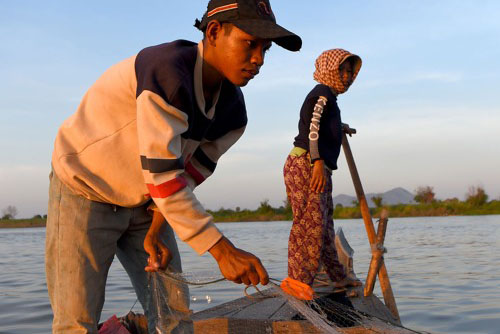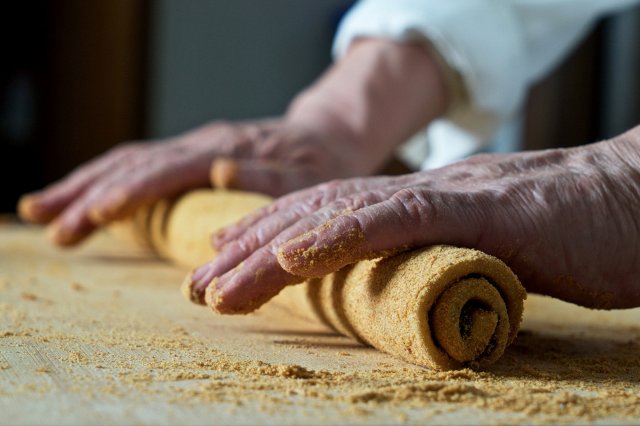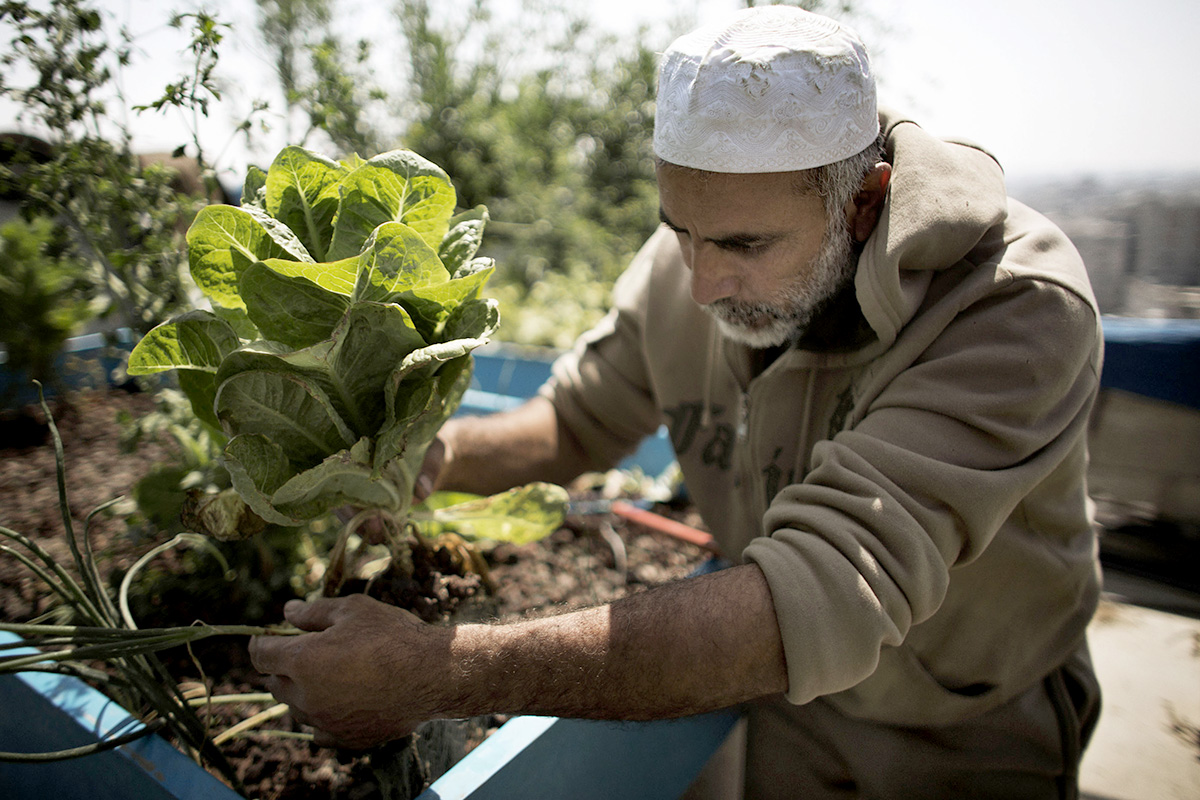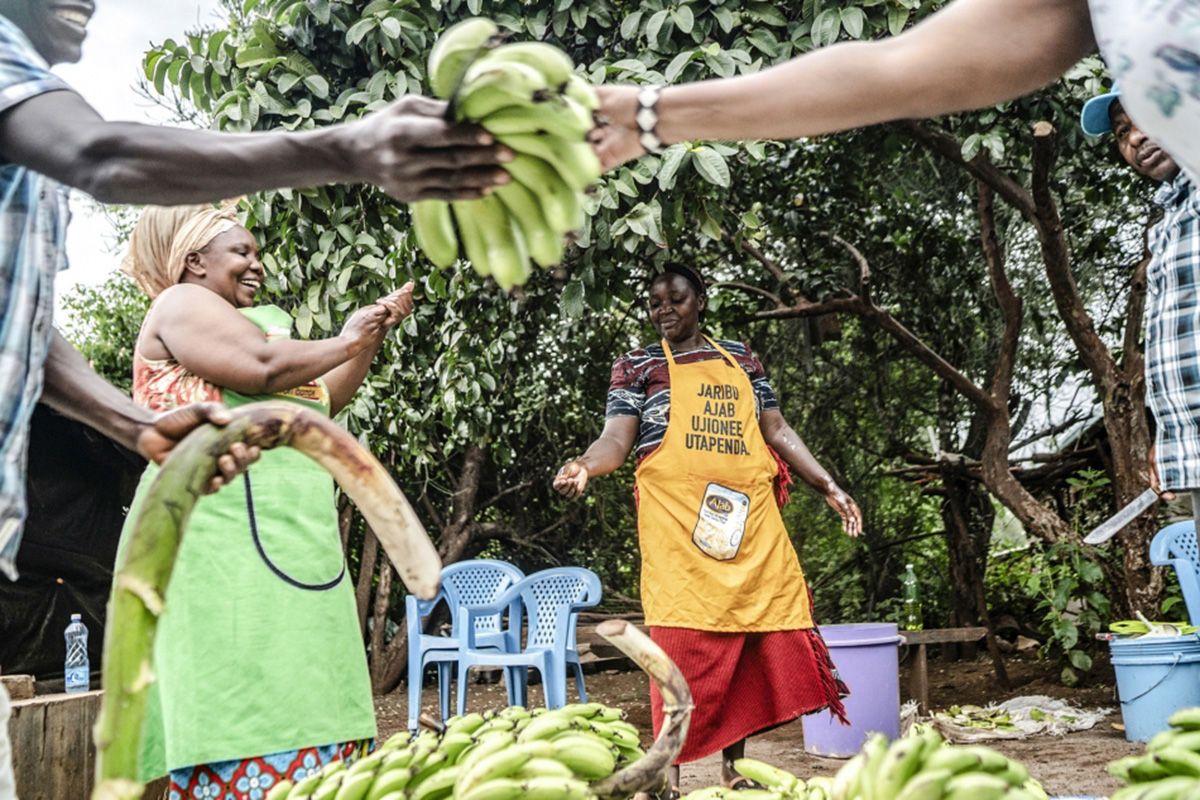With project funding from the Central Emergency Response Fund, FAO supported 37,200 smallholder farmers, including Khialy Gul, across 16 provinces of Afghanistan with an emergency wheat cultivation package.
FAO
Calling all children and teens around the world! If you’re between the ages 5 to 19, FAO wants you to use your imagination and create a poster showing a food journey! There are many different kinds of journeys that food can take, some that guarantee a healthier future for people and the planet. Choose your favourite and be creative!
In 2016 food safety issues arose and the Government of Bhutan announced a ban on the import of chilli peppers. The country was left baffled. Chillies have been used extensively in the Bhutanese diet since ancient times, yet much of the country’s farming communities were ill-prepared to grow chillies due to climate and topography. A group of farmers dared to explore the uncharted territory, to grow the chillies needed for their cooking traditions while creating an additional income. With chilli seeds from a FAO-supported programme, these farmers ultimately met with success.
FAO podcast: Tonle Sap Lake in northeast Cambodia is one of the most productive inland fishing waters in the world, due to flooding and monsoon. Fisheries are the backbone of country’s economy, with Tonle Sap contributing over half of the country’s fish production. Yet the lake’s 4.8 million residents are some of the poorest in Asia. Many depend heavily on fish and rice for their livelihoods and have to send their children to work rather than school, in order to survive. The Food and Agriculture Organization of the United Nations (FAO) is working with the government and partners to get children back to school.
Producers: Charlotta Lomas, Anais Hotin, Marina Sánchez Castelo, Chann Tet, Sophana Sim, Panos Pictures.
Presenter: Charlotta Lomas, FAO.
Photo ©FAO/Tang Chhin Sothy.
A lack of ‘soft skills’ is limiting progress for farmers in many rural areas. These skills include the ability to share new knowledge, communicate clearly and collaborate with other food system actors, negotiate with buyers and engage in policy dialogue processes.
Tasked with using geospatial technology to count trees in a remote region of northeast Nicaragua Rene Zamora, a Forest Economist from the World Resources Institute (WRI), spread the word so that local people could help. Most of his recruits worked in cattle ranching and agriculture and had never used a computer before. The end result was an FAO-WRI “mapathon”, where local people first learned the necessary computer skills and data-collection techniques before applying this knowledge, all with the goal of creating a high-resolution map of where the region’s trees are.
With our modern lifestyles adding more stress on natural resources and a population to feed that will grow to almost 10 billion by 2050, sustainable gastronomy is something we should all keep in mind as we source, cook and eat our food. Sustainable gastronomy means choosing and cooking food in a way that considers all it takes for food to get from fields to our plates, including how the food is grown and transported to what ingredients we choose and where we buy them from. FAO spoke to two chefs, who are also goodwill ambassadors for the organization.
The Mediterranean is just one of the regions where FAO is supporting countries to sustainably manage and protect marine environments, while counteracting overfishing of coral, fish, and other species. Through the regional GFCM, FAO is working with Italy and other countries to improve control and surveillance of fishing while seeking to keep red coral harvesting at sustainable levels. The management measures are designed to ensure the sustainability of red coral fishing, the job viability of the fishers, artisans and others in the industry who depend on it.
Humans can only flourish where there is enough safe food for all. Food safety supports many Sustainable Development Goals, which cannot be achieved if food is not safe for everyone. World Food Safety Day (7 June) aims to draw attention and inspire action to help prevent, detect, and manage foodborne risks, to keep food safe. Join us to help spread the word about #SafeFood! Watch today’s FAO event to learn about the crucial role of science in keeping food safe throughout the food chain. A few examples of successful and inspiring food safety stories will be shared from across the world.
Financial backing from the GEF, FAO, UNEP and other international conservation partners has been set out to protect and restore mangrove species and safeguard the livelihoods of fish dependent communities in and around the Siné Saloum Delta. The programme, called the Coastal Fisheries Initiative, invests in restoring degraded mangroves so that they can retain their important role in balancing ecosystems. The Initiative is regenerating land and replanting large areas of mangroves, while also working with communities to rethink how they utilise and conserve them.
Argan trees grow naturally in the semi-desert forest regions of southwestern Morocco; safeguard against desertification and climate change; are a symbol of adaptation and harmonious co-evolution between rural communities and their ecosystem; empower rural women by creating jobs in the argan and agri-tourism industry; contribute to the food security and nutrition of rural communities.
On World Bee Day, we celebrate the contribution that bees and other pollinators make to food security. Pollinators, such as bees, birds, and bats, contribute to 35 percent of the world’s total crop production, pollinating 87 of 115 leading food crops worldwide. In this time of the pandemic, FAO is helping communities regain their livelihoods, while also supporting local biodiversity and restoring ecosystems. Learn more about World Bee Day, how we can build back better for bees and how you can BEE involved!
FAO has been at the centre of the discourse of responsible business conduct in agriculture for several years. In 2016, FAO and the OECD launched a global standard for addressing risk and development in the agricultural sector. A growing number of governments around the world have since been incorporating the OECD-FAO guidance for responsible agriculture into their corporate sustainability policies, linking together investment, enterprise, agriculture, and development.
FAO reports on the stark warning from the 2021 Global Report on Food Crises revealing that conflict, economic shock and extreme weather continue to cause acute food insecurity.












